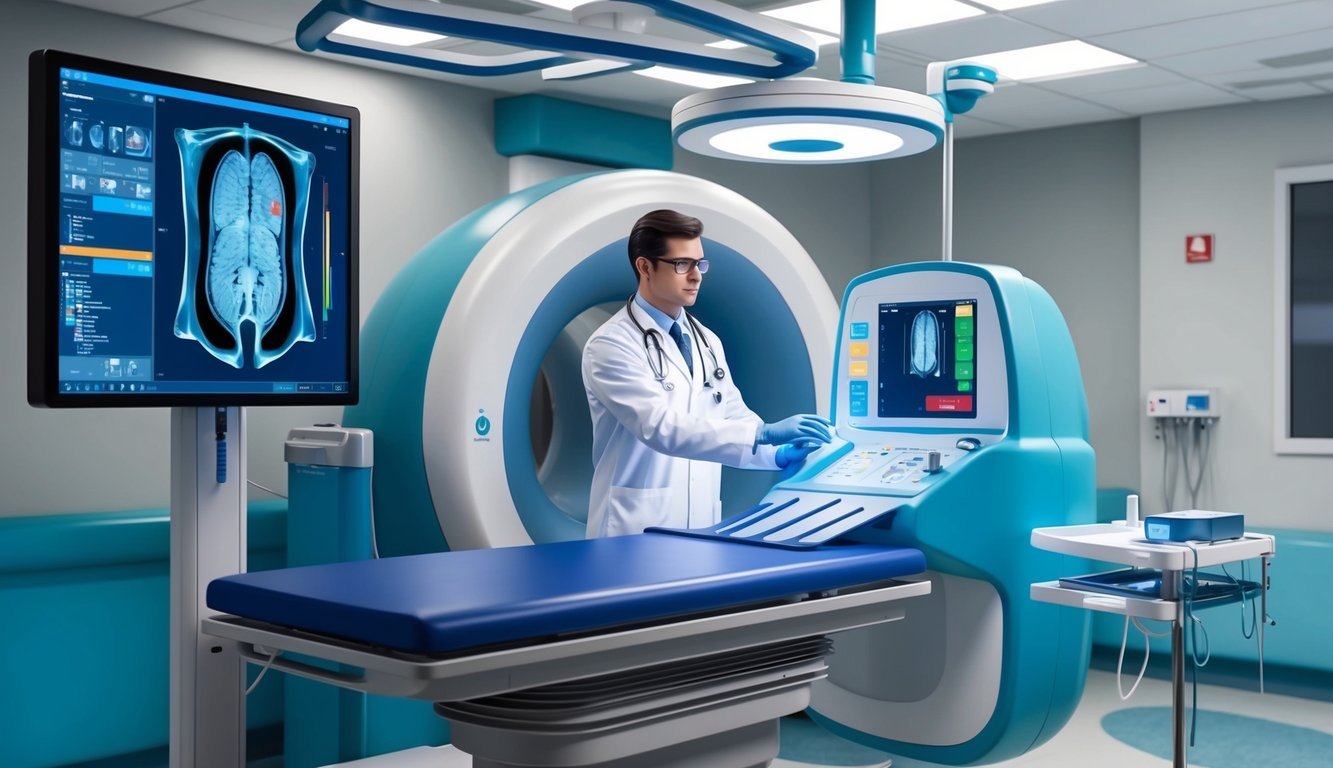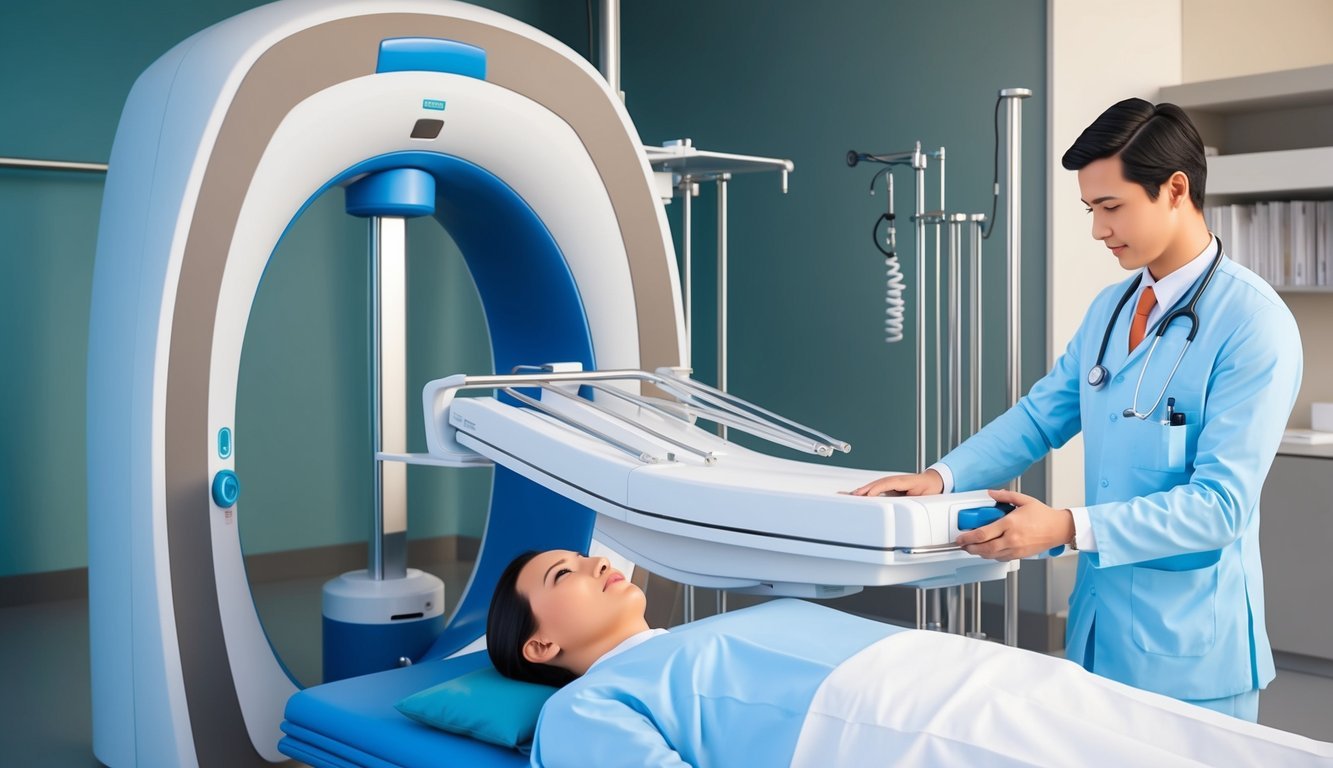Pursuing a career as a radiologist technician can be both rewarding and well-compensated. Radiologic technologists in the U.S. earn an average annual salary of approximately $75,250.
With opportunities for growth as you gain experience in the field, this role is essential in the healthcare system.
You will be responsible for conducting diagnostic imaging procedures that aid in patient care.
To become a radiologist technician, you need to complete a radiology program and obtain the necessary certifications.
This includes passing a certification exam and preparing a strong resume to enhance your job prospects.
As you advance in your career, the potential for a higher salary increases significantly, making this profession an attractive option for those interested in healthcare.
Understanding the salary landscape and the steps to enter this field will help you make informed decisions about your career path.
With dedication and the right training, you can unlock a fulfilling and financially rewarding career in radiology.
For more detailed information on becoming a radiology technician, visit Nurse.org and Forbes.
Path to Becoming a Radiologist Technician
Becoming a radiologist technician involves a structured educational path, gaining necessary certifications, and fulfilling licensing requirements.
This journey ensures you are well-prepared for a rewarding career in medical imaging.
Required Education
To become a radiologic technologist, you typically need to complete an accredited radiologic technology program.
Options include earning an associate’s degree or a bachelor’s degree.
Most programs cover essential topics such as anatomy, patient care, and radiation physics.
Associate programs generally take about two years to complete, while bachelor’s programs may take four years.
Some institutions also offer certificate programs, which are ideal for those who already hold degrees in related fields and wish to transition into radiology.
It’s advisable to choose programs accredited by the Joint Review Committee on Education in Radiologic Technology (JRCERT).
Completing an accredited program is vital for eligibility for certification exams.
Certification Process
After finishing your educational program, you will need to obtain certification.
The American Registry of Radiologic Technologists (ARRT) is the primary certifying body.
To earn ARRT certification, you must pass a national examination covering various aspects of radiologic technology.
The exam assesses your knowledge of radiology principles and procedures.
Maintaining certification requires ongoing professional development, including continuing education credits every two years.
This requirement ensures you stay updated with advancements in the field.
Licensing Requirements
Licensing requirements vary by state.
Most states mandate licensure for practicing radiologic technologists.
This typically involves providing proof of your education and certification, followed by passing a state exam if required.
It’s crucial to check the specific requirements in your state, as some may have additional criteria or special licenses for different imaging modalities (like MRI or CT scans).
Staying informed about regulations will ensure your compliance and enhance your career prospects.
Specializations and Advanced Credentials

As a radiologic technologist, you have opportunities to specialize in various fields, enhancing your skills and increasing your earning potential.
Specializations not only augment your technical capabilities but also open doors to advanced certifications.
MRI Technologist
Pursuing a specialization as an MRI technologist focuses on magnetic resonance imaging.
You will learn to operate MRI equipment, ensuring patient safety and image quality.
To become certified, you typically need to complete an accredited MRI program, followed by the American Registry of Radiologic Technologists (ARRT) certification.
Advanced skills in anatomy and patient care are crucial.
The average salary for MRI technologists can vary by location and experience but generally ranges from $65,000 to $90,000 annually.
Professionals in this field are often in high demand due to the advanced technology and skills required.
Nuclear Medicine Technology
Nuclear medicine technologists specialize in using radioactive materials for diagnostic imaging and treatment.
You will be trained in techniques that involve injecting radiopharmaceuticals and operating imaging devices.
Certification in nuclear medicine requires completion of an accredited program and passing the ARRT nuclear medicine exam.
Attention to detail and a strong understanding of chemistry are essential components of this role.
Salaries for nuclear medicine technologists typically range from $70,000 to $95,000 per year, influenced by factors such as geography and work setting.
Radiation Therapy
As a radiation therapist, you will focus on treating patients with cancer or other diseases using targeted radiation.
This specialization requires operating linear accelerators and maintaining patient care throughout treatment.
To enter this field, you must complete an accredited radiation therapy program and obtain licensure, often by passing the ARRT certification exam.
Compassion and technical proficiency are vital to successfully support patients facing difficult treatments.
Radiation therapists usually earn between $70,000 and $100,000 annually.
The high level of specialization and the critical role in patient care contribute to this earning potential.
Patient Care and Clinical Responsibilities

In your role as a radiologic technologist, patient care and clinical responsibilities are essential to ensure the safety and comfort of patients during diagnostic imaging procedures.
This involves a combination of technical skills and interpersonal interactions that facilitate effective treatments.
Diagnostic Imaging Procedures
As a radiologic technologist, you perform various diagnostic imaging procedures, including X-rays, CT scans, and MRIs.
You begin by preparing patients for these procedures, explaining the process to alleviate any anxiety.
Accurate positioning of the patient is crucial to obtain clear images.
Here are some common procedures you may conduct:
| Procedure | Description |
|---|---|
| X-rays | Use radiation to capture images of bones and tissues. |
| CT Scans | Provide cross-sectional images of the body using X-ray technology. |
| MRIs | Use magnetic fields and radio waves to produce detailed images of organs. |
You must follow protocols meticulously to ensure images meet diagnostic standards.
Radiation Safety and Protection
Radiation safety is a top priority in your practice.
You must adhere to strict guidelines to protect both your patients and yourself from unnecessary exposure.
This includes using shielding devices, such as lead aprons for patients.
Key safety measures include:
- ALARA Principle: Keeping radiation exposure “As Low As Reasonably Achievable.”
- Monitoring Equipment: Using dosimeters to track radiation exposure.
- Educating Patients: Informing them about safety procedures and what to expect during imaging.
By implementing these practices, you contribute to a safer clinical environment while providing essential diagnostic services.
For additional information on radiation safety, visit NRS.gov.
Career Advancement and Continuing Education

Advancing your career as a radiologic technologist requires a commitment to leadership roles and ongoing education.
Engaging in continuous learning and skill enhancement can significantly impact your professional trajectory and potential earnings.
Leadership and Management Opportunities
As a radiologic technologist, pursuing leadership roles can elevate your career.
You may consider positions like a radiologic technology manager or a supervisor in imaging departments.
Professional organizations like the American Registry of Radiologic Technologists offer resources for those looking to step into these roles.
Advanced education, such as earning a master’s degree in health administration or a related field, can further prepare you for leadership positions.
Opportunities in management often come with increased responsibilities and higher salaries.
According to industry trends, experienced leaders can earn upwards of $80,000 annually, depending on the organization and location.
Continuing Education for Skill Development
Continuing education is essential for staying competitive in radiologic technology.
You should aim to complete continuing education units (CEUs) to renew your license and enhance your skill set.
Courses can cover specialized areas such as MRI, CT, or ultrasound technology.
Acquiring additional certifications through the American Registry of Radiologic Technologists can further differentiate you in the job market.
Consider pursuing a role as a radiologist assistant to expand your responsibilities in patient care.
This typically requires additional training and education, but can lead to greater job satisfaction and salary potential, making it a worthwhile commitment.
Job Market and Salary Expectations
In pursuing a career as a radiologic technologist, understanding salary expectations and the job market is crucial.
This section outlines the average salary, potential variations based on experience, and the job outlook for this field.
Average Salary and Variations
The average salary for a radiologic technologist in the United States is approximately $75,250 according to the Bureau of Labor Statistics (BLS).
This figure can vary significantly based on geographic location, experience, and specific specialties.
For example, entry-level positions typically earn around $50,020, while those in the 90th percentile can make over $100,000.
Below is a breakdown of average hourly wages based on experience:
| Experience Level | Average Hourly Wage |
|---|---|
| Less than 1 year | $20.61 |
| 1-4 years | $22.41 |
| 5-9 years | $24.05 |
| 10-19 years | $29.00 |
Such variations highlight the potential for growth as you gain experience in the field.
Job Outlook and Growth Projections
The job outlook for radiologic technologists is favorable.
From 2023 to 2033, employment is projected to grow 6%, which is faster than the average for all occupations.
The BLS anticipates approximately 16,000 openings annually, largely due to job replacements.
Factors contributing to this growth include an aging population that requires more imaging services and technological advancements in radiologic equipment.
There is a continuous demand for skilled technologists, emphasizing the stability and potential longevity of this career.
Entering the field as a radiologic technologist presents promising opportunities for advancement and financial stability.

